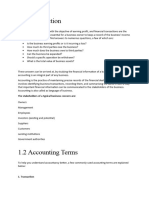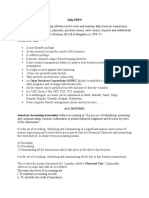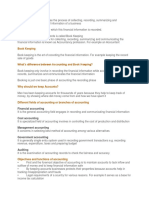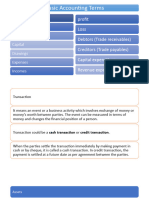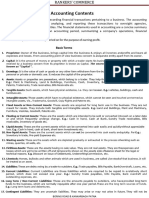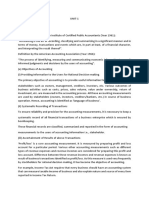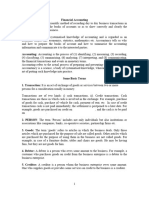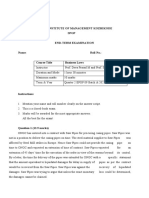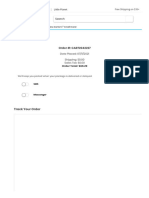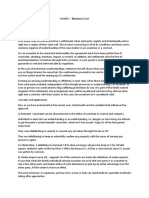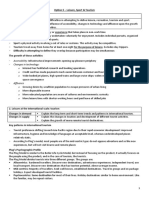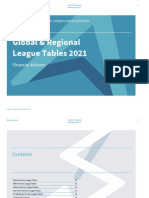0% found this document useful (0 votes)
39 views10 pagesIntroduction To Accountancy-Basic Concepts
This document provides an introduction to key accounting concepts. It defines business, trading activity, and money. It explains the evolution of money and defines bookkeeping as the recording of business transactions in a systematic manner. The objectives and importance of bookkeeping are outlined, including providing financial information to internal and external users. Key accounting terms are defined, such as transactions, goods, assets, liabilities, capital/equity, debtors, creditors, drawings, expenses, income/revenue, and discounts. Asset and liability classifications are also described.
Uploaded by
jemrecayakCopyright
© © All Rights Reserved
We take content rights seriously. If you suspect this is your content, claim it here.
Available Formats
Download as PDF, TXT or read online on Scribd
0% found this document useful (0 votes)
39 views10 pagesIntroduction To Accountancy-Basic Concepts
This document provides an introduction to key accounting concepts. It defines business, trading activity, and money. It explains the evolution of money and defines bookkeeping as the recording of business transactions in a systematic manner. The objectives and importance of bookkeeping are outlined, including providing financial information to internal and external users. Key accounting terms are defined, such as transactions, goods, assets, liabilities, capital/equity, debtors, creditors, drawings, expenses, income/revenue, and discounts. Asset and liability classifications are also described.
Uploaded by
jemrecayakCopyright
© © All Rights Reserved
We take content rights seriously. If you suspect this is your content, claim it here.
Available Formats
Download as PDF, TXT or read online on Scribd
/ 10











